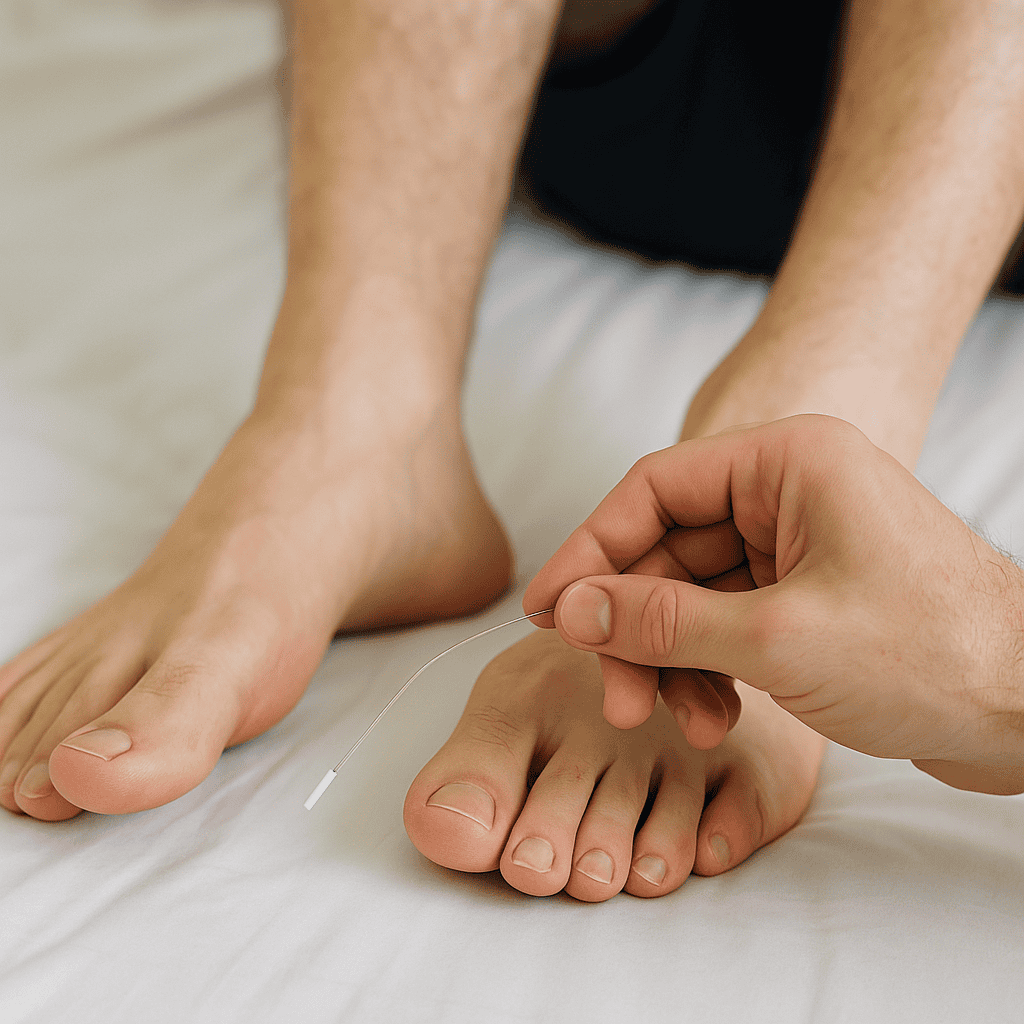Diabetic Neuropathy – Everything You Need to Know

Diabetic neuropathy is a common complication of diabetes mellitus caused by damage to the nerves due to chronic hyperglycemia. It can affect any part of the nervous system, but it most often impacts the extremities—feet and hands—causing numbness, tingling, pain, or loss of sensation. Neuropathy can develop in both type 1 and type 2 diabetes, and the risk increases with longer disease duration and poor glycemic control.
Passing through Romania and need a prescription for your chronic treatment?
Contact the Dr. Petrache’s Virtual Clinic for any medical issue you encounter while in Romania. Send an email to: clinica@diabet-si-nutritie.ro
How does neuropathy occur in diabetes?
High blood sugar damages the small blood vessels that supply nerves with oxygen and nutrients. Over time, this leads to progressive nerve fiber deterioration. Chronic inflammation, oxidative stress, and the accumulation of advanced glycation end products (AGEs) also contribute to nerve dysfunction and death.
Other risk factors that accelerate neuropathy include:
- High blood pressure
- Dyslipidemia
- Smoking
- Excessive alcohol consumption
- Chronic kidney disease
Types of diabetic neuropathy
There are several forms of neuropathy, each with specific symptoms:
1. Peripheral neuropathy (distal symmetric polyneuropathy)
This is the most common type. It primarily affects the feet and, less commonly, the hands. Symptoms include:
- Tingling, burning, or stabbing pain
- Numbness or “glove and stocking” sensation
- Nighttime pain
- Loss of sensitivity to pain, temperature, or vibration
- Increased risk of wounds, ulcers, and amputation
2. Autonomic neuropathy
This affects nerves that control involuntary body functions, such as:
- Heart rate (resting tachycardia)
- Blood pressure (orthostatic hypotension)
- Gastric emptying (gastroparesis)
- Bladder function (retention or incontinence)
- Sweating regulation
- Sexual function (erectile dysfunction, vaginal dryness)
3. Proximal neuropathy (diabetic amyotrophy)
It causes severe pain and weakness in the hips, thighs, or buttocks. It occurs more frequently in older men with type 2 diabetes.
4. Focal neuropathy (mononeuropathy)
This appears suddenly and affects a single nerve, often in the head, torso, or limbs. Examples include facial nerve palsy or intercostal nerve pain.
Passing through Romania and need a prescription for your chronic treatment?
Contact the Dr. Petrache’s Virtual Clinic for any medical issue you encounter while in Romania. Send an email to: clinica@diabet-si-nutritie.ro
Warning signs you shouldn’t ignore
- Numbness or loss of sensation in the feet
- Burning or unexplained pain in the soles
- Frequent falls due to poor balance
- Persistent digestive issues (bloating, nausea, early fullness)
- Night sweats or lack of sweating
- Urinary problems or sexual dysfunction
Even mild symptoms may signal early nerve damage and require attention.
How is diabetic neuropathy diagnosed?
Diagnosis includes:
- Clinical examination: testing sensitivity to touch, temperature, vibration, and pressure
- 10g monofilament test: assesses risk of foot ulcers
- Tuning fork test: evaluates vibration perception
- Electromyography (EMG): analyzes motor and sensory nerve function
- Autonomic function tests: such as heart rate variability
Early diagnosis is key to preventing serious complications.
Can diabetic neuropathy be treated?
While nerve damage cannot be fully reversed, proper treatment can slow its progression, relieve symptoms, and improve quality of life.
Treatment options include:
- Optimal glycemic control – the most important measure
- Managing blood pressure and cholesterol
- Smoking and alcohol cessation
- Medications for nerve pain: pregabalin, gabapentin, duloxetine, amitriptyline
- Topical treatments: capsaicin cream or patches
- Supportive therapies: physical therapy, massage, balance exercises
- Regular podiatric care: for foot inspection and ulcer prevention
Can diabetic neuropathy be prevented?
Yes, and prevention is crucial. Strategies include:
- Maintaining HbA1c below 7%
- Regular physical activity
- A balanced diet rich in vitamins and low in refined sugars
- Annual foot exams
- Prompt treatment of skin injuries
The earlier the intervention, the better the outcome.
Foot care in patients with neuropathy
People with peripheral neuropathy must take extra care of their feet:
- Inspect feet and toes daily
- Wear soft, well-fitting shoes with no seams
- Avoid walking barefoot—even indoors
- Keep feet dry, especially between toes
- Visit a podiatrist or dermatologist regularly
Preventing foot ulcers and infections is critical to avoiding amputations.
Passing through Romania and need a prescription for your chronic treatment?
Contact the Dr. Petrache’s Virtual Clinic for any medical issue you encounter while in Romania. Send an email to: clinica@diabet-si-nutritie.ro
Conclusion: Neuropathy is serious but manageable
Diabetic neuropathy can greatly affect quality of life, but it is not a life sentence. With careful monitoring, strict metabolic control, and proper care, symptoms can be reduced and progression slowed. Don’t wait until symptoms worsen—talk to your diabetologist about any changes in sensation or pain.
Schedule your personalized consultation in the Virtual Clinic of Dr. Petrache for modern, effective treatment and expert care.
Follow us On:
- FaceBook: Diabetes & Nutrition;
- YouTube: Diabetes Facts.
















